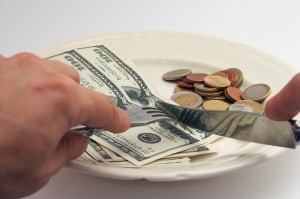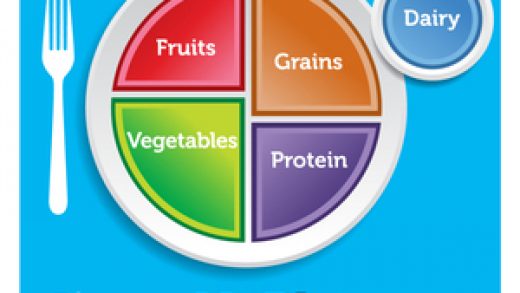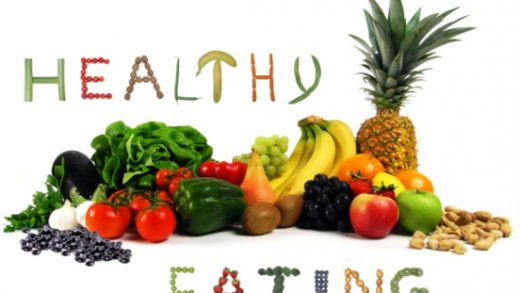Just how much are we spending on food? Don’t just count the dollars that ring up at the grocery store register. Also, count the medical costs. Count the social cost. Count the future cost for our children. Now how much would you pay?
“If current trends continue, 1 out of 3 Americans will get type 2 diabetes in their lifetime. This includes 1 out of 2 African Americans and Latinos.”
Lee Zukor, Food Blogger
That’s according to Lee Zukor, founder of SimpleGoodandTasty.com. Do you think you’re paying a lot in taxes now? The health problems created by bad food will make more people dependent on the government, our government, for the basic necessities of life. What we eat is a leading cause of the health problems I’ve been talking about related to our food. If you think you’ve got it bad, imagine what it’s like for the millions of Americans living in poverty.
- People in poor areas often do not have access to fresh food.
- Good food often costs more money.
- Fast food restaurants target minority groups with their advertising dollars.
But it’s not just the poor who are facing a crisis. Actual incomes for middle and working-class people have been declining, meaning we all have less money to spend on food and other living expenses. And the simple fact is good food costs more. That means that even people who can afford better food don’t buy it.
“We’ve come to think of cheap food as our right, and the idea of paying more when we could pay less seems silly, almost un-American. We’re saving our money for the things we think are really important, like cable TV and betting on football games.”
Lee Zukor, Food Blogger
But while we make appointments with the doctor and nutritionist, and even the undertaker, to deal with the problems that come from that cheap food, big agribusiness corporations are shoving our money in their pockets. We will pay for all that cheap food, sooner or later, one way or another.
It’s an uphill battle. We have first-hand experience with the consequences of cheap but nutritionally poor food, of eating what tastes good because no one bothers to make what’s good for us also taste good. We face the partial myth that making good food not only costs more but takes a lot more time. And this goes beyond just the time to cook.
“Good food — pasture-raised, pesticide-free, grass-fed food — often grows more slowly than industrially raised food. Grass fed cattle need extra months to put on weight, for example.”
Lee Zukor, Food Blogger
Okay, we’ll admit that going through the drive-through on the way home seems to take a lot less time than breaking out the pots and pans and cooking at home. But the curious thing is that it doesn’t have to. That’s one of the points we’re trying to demonstrate in this blog.
Which is faster? Ordering a pizza delivery or making a fresh homemade pizza in your kitchen? Would you believe it takes exactly the same time! On our Recipes Page is a quick and easy pizza crust recipe. You can have fresh hot pizza from your own oven in just an hour. And you don’t have to use tomato sauce or stick to just the usual toppings. Be creative! Use up those leftovers!
So why don’t we do it? Zukor says part of our drive to bad food is that we see it as a treat we deserve.
“We work hard, and we deserve a treat. Many of us have been told what to do all day at work. We’ve been deprived of sunlight, of a flexible schedule, of meaningful work, of exercise, of all sorts of things that make us feel good and human. Bad food gives us the illusion of control, and it makes us feel good right away. Guilt and health concerns may come later, but right now we need a treat.”
Lee Zukor, Food Blogger
That attitude starts early. Many parents are so concentrated on getting food into the kids, getting them to behave, getting them to be quiet, they don’t think about the quality of the food.
And on top of all that, there’s this belief that our food supply is safe. We believe that those processed and take-out foods are properly inspected and controlled. Sorry, but that’s just not true. Remember all those hamburger scares a few years ago from meat in fast-food restaurants? How about the recent romaine lettuce recall for contamination of e. coli bacteria? That lettuce wasn’t sent to supermarkets, but to commercial and industrial kitchens: hospitals, restaurants, cafeterias and the like.
I’ve said it before and I’ll say it again: the life you save could be your own. Why do I keep harping on this? Because so few people out there are talking about it. I think this is a big deal. It’s important not just to our own personal health and the health of our families, but for the cost to our society. That cost is not just in dollars, but in lives, talent, genius and all the things that make a people great.



